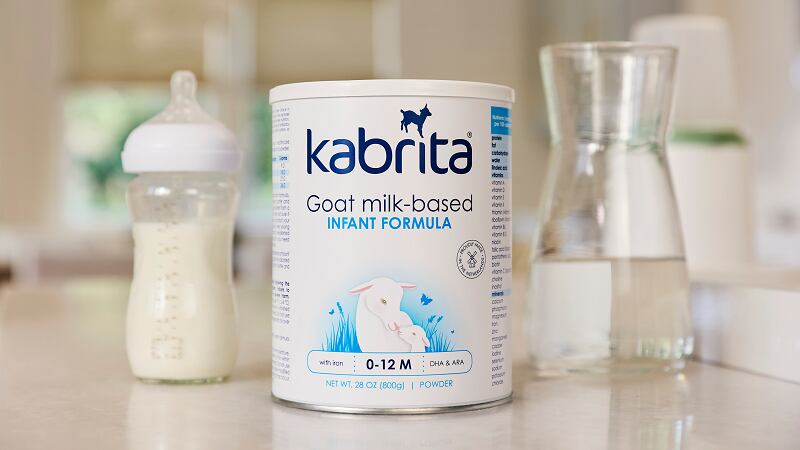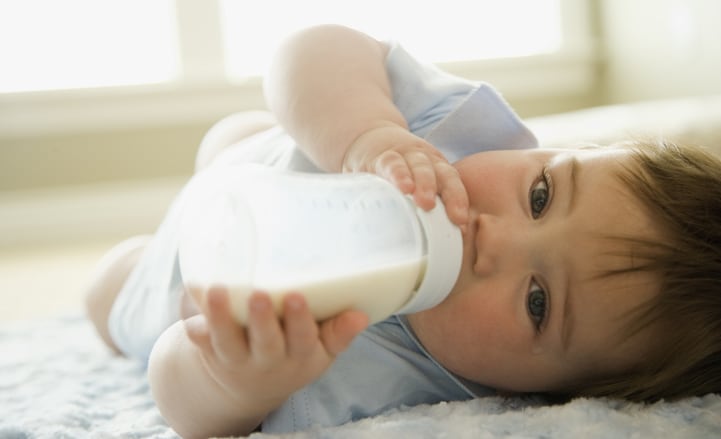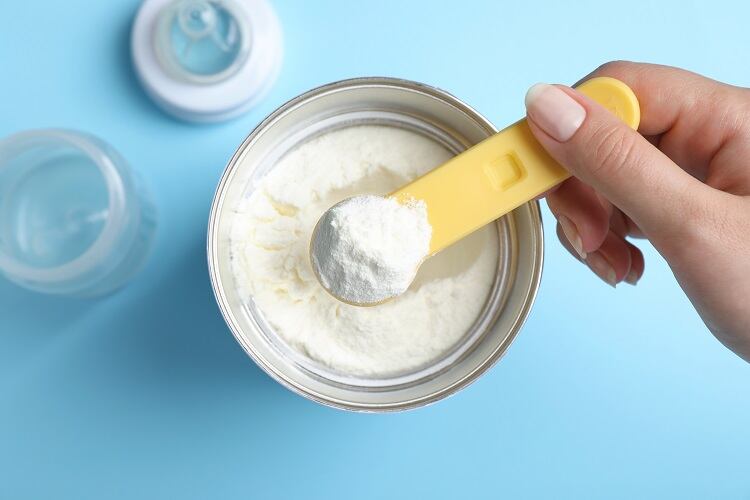In addition to its goat-milk-based formula for toddlers, Kabrita is now offering a goat-milk-based infant formula through its website and Amazon and will soon roll out the product to select retailers nationwide in the coming months. The product meets all of FDA's federal nutrient requirements for an infant formula, Kearns stated.
Dutch-based goat milk product maker Ausnutria, Kabrita’s parent company, started the journey to release the goat-milk-based formula in the US more than 10 years ago, when the product first received a greenlight to sell in Europe, Kearns said. After achieving market success in Europe, Ausnutria turned its attention to the US market.
“This is not a decision that the Kabrita leadership team made overnight, and it certainly is not something where the Kabrita team realized that there was an opportunity because of the 2022 infant formula crisis. This was all in the works long before then.”
A 10-year journey from GRAS status to finished product
In 2014, Ausnutria began the process of certifying its whey protein concentrate and non-fat dry goat milk as GRAS for use in infant formula in the US, which the FDA acknowledged with a no-questions letter two years later.
Kabrita's goat-milk-based formula is the latest in a string of related products to hit US shelves in recent years, with other companies seeking GRAS status for various goat-milk-based ingredients for use in infant formulas.
Earlier this year, formula maker Jovie said it received approval from the FDA for the GRAS status of its dry whole goat milk for use in non-exempt infant formulas for the US market, which it submitted last February. It plans to launch a similar product to Kabrita in 2024.
Previously, Aussie Bubs released in the US a goat-milk-based toddler formula, which is held to a different standard than infant formula, and in May 2022 received a greenlight from the FDA to import several of its infant formulas, including one with goat milk, as part of an enforcement discretion effort to boost infant formula availability following a national shortage. FDA's enforcement discretion ended Jan. 6, 2023, for companies that did not provide a letter of intent to FDA by Dec. 5, 2022. Aussie Bubs notified the FDA it would take steps for its goat milk and other infant formulas to remain on the US market.
Though some of these international goat-milk-based baby formulas are still on the US market, they "have not gone through all of the FDA requirements” that Kabrita has, Kearns noted.
Educating parents on the science of goat milk in infant formula
While some US caregivers became familiar with goat-milk infant formulas during the infant formula shortage and through other products on the market, Kabrita is now focusing on educating curious caregivers on the role that goat-milk can play in the health of infants, showing how it’s “closer in nutritional composition to breast milk than cow's milk base infant formula,” Kearns explained.
Kearns elaborated, noting goat milk is more similar to breast milk than cow-milk-based formulas among three important macronutrients: protein, carbohydrates, and fat.
On protein composition, the whey and casein proteins are much more like breast milk, providing several benefits for infants, Kearns explained. Per its research, Kabrita found that after two hours, “50% of the whey is digested for both breast milk and Kabrita,” whereas “only 35%” is digested in cow's milk, she said.
Per its fat composition, Kabrita's infant formula has a fatty acid called SN-2 palmitic acid, which is the second most dominant fatty acid in breast milk at the six-month mark.
Infant formula makers have tried to mimic the fat profile of human milk palmitic acid through the use of palm oil, which is digested in a different way than the palmitic acid (SN2 palmitic acid) Kabrita is using in its formula, she claimed. Traditional palm oils contain "a lot of free-flowing palmitic acid" that "binds to calcium,” while SN2 palmitic acid is more similar to breast milk, she added.
"If [the palmitic acid in palm oil is] freely flowing in their digestive tract [and] binds to calcium. It creates something called calcium soaps. It's certainly not dangerous ... but it means that there is less fat absorption, which is a critical nutrient for these infants who are growing so rapidly. It also means there is less calcium absorption, which is a critical nutrient for these babies whose bones are growing so rapidly, and it can lead to constipation potentially. So, parents are hyper-aware of palm oil having some of these possible effects."
Lastly, “the third largest ingredient in breast milk is oligosaccharides,” prebiotics vital for infant health, and are five times higher in goat milk than cow milk, Kearns said.
As the company educates consumers on the science and benefits of goat milk, Kabrita will also share its goat-milk research through a series of webinars, and other engagements throughout the year, she added. The company also will use traditional marketing activities.
“The number one thing that we are now working towards is getting the word out through education, not just marketing, but really leaning into all of the science that we have and empowering parents as well as health care providers to make the best choice for them and their families and their patients," Kearns said. "I believe that the best way to do that is by giving them all the knowledge that they need to answer their curiosity.”




